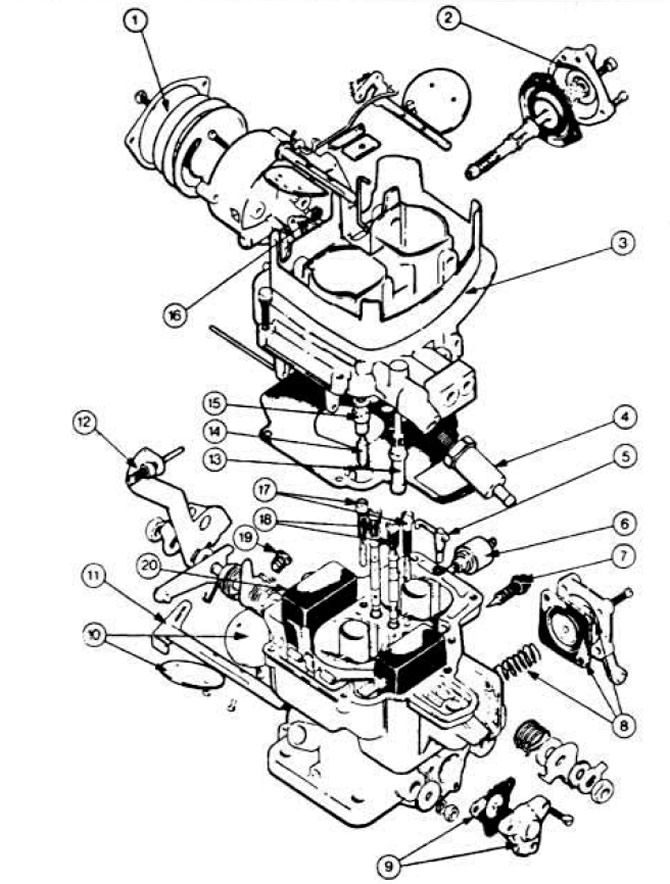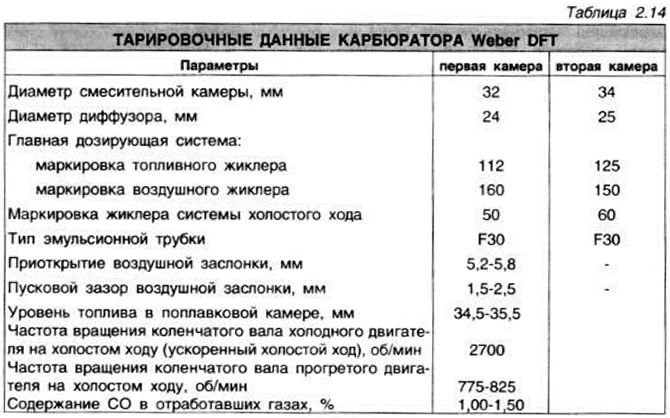Device Features
Two-chamber with a falling flow, with sequential opening of throttle valves The carburetor has an accelerator pump, an economizer of power modes. automatic starter with electric thermal switch and magnetic shut-off valve (pic. 2.90).
 Pic. 2.90. Details of a Weber carburetor.
Pic. 2.90. Details of a Weber carburetor.
1 - body of a bimetallic spring; 2 - air damper pneumatic actuator: 3 - carburetor cover; 4 - fuel filter; 5 - fuel pump nozzle; 6 - electromagnetic shut-off valve; 7 - quality screw; 8 - accelerator pump; 9 — economizer power modes; 10 — throttle valves; 11 - throttle valve axis: 12 - fast idle adjustment screw; 13 - fuel drain hose into the tank; 14 - needle valve; 15 - needle valve seat; 16 - gasket; 17 - idle fuel jet; 18 - emulsion tube, air and fuel jets of the main metering system; 19 - quantity screw; 20 - float.

Removal and installation
Disconnect the negative cable from the battery and remove the air filter. Disconnect the wires from the automatic starter and the solenoid shut-off valve. Disconnect the vacuum supply hose to the vacuum ignition timing regulator and the throttle actuator rod. Disconnect the fuel supply and return hoses. Cut the clamps on these hoses and replace them with clamps with a screw or a screw and nut. Unscrew the two fastening nuts, remove the washers and the carburetor. Clean mating surfaces and install carburetor with new gasket. Connect the hose to the vacuum ignition timing regulator and the fuel inlet and outlet hoses. Connect the throttle actuator rod. Connect the wires to the automatic starter and to the solenoid shut-off valve. Install the air filter and connect the battery. Check idle speed and CO content in exhaust gases.
Visitor comments